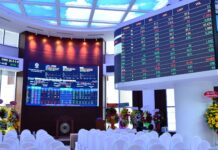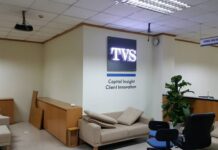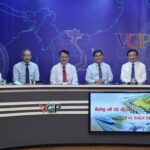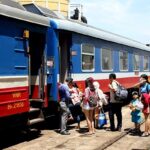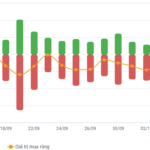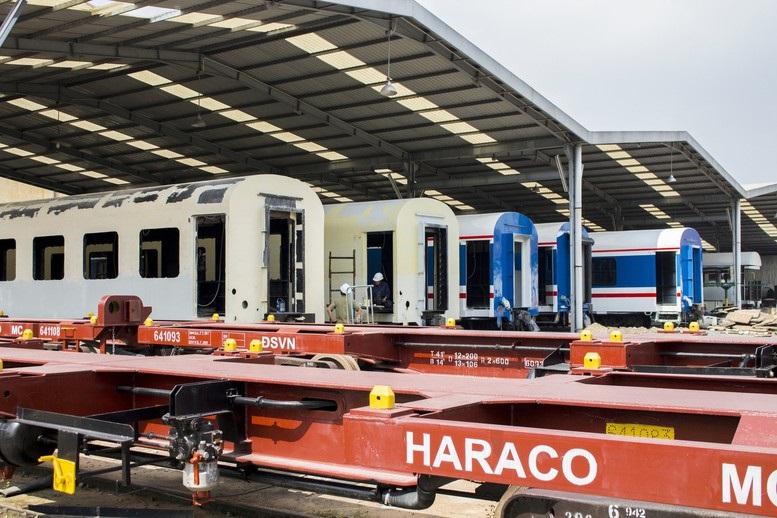
Vietnam Railways has submitted to the competent authorities a project for a Railway Industrial Complex in Hanoi, with an area of approximately 250 hectares and an initial investment of over VND 17,500 billion – Illustration
|
According to calculations by Vietnam Railways (VNR), the industry currently has 258 locomotives, 980 passenger cars, and over 4,300 freight cars. By the end of 2025, at least 114 locomotives, 1,472 freight cars, and 168 passenger cars will have to be retired according to age limits.
Thousands of train cars and locomotives to be retired by the end of this year
Meanwhile, the Railway Network Planning by 2050 aims to build 25 routes with a total length of more than 6,300 km, including 18 new routes. Especially for urban railways, high-speed railways, and local railways, will require thousands of new locomotives, passenger, and freight cars.
The North-South high-speed railway alone is expected to require 1,100 EMU (Electric Multiple Unit) cars. Urban railways need nearly 1,500 cars. Existing railways and new electrified railways will also need hundreds of locomotives, thousands of passenger cars, and more than 7,000 freight cars.
The demand for train cars and locomotives is enormous, but according to Mr. Hoang Nang Khang, Deputy General Director of VNR, the domestic railway industry is currently only capable of repairing and replacing old systems. They have not yet exported any products or manufactured electric locomotives. The capacity to build new specialized freight cars is also very limited.
Goal of mastering production technology
Faced with these urgent realities, Vietnam Railways has submitted to the competent authorities a project for a Railway Industrial Complex in Hanoi, with an area of approximately 250 hectares and an initial investment of over VND 17,500 billion. The goal of this complex is to master production technology, localize locomotives and train cars, manufacture components, information-signal-electrification software, and perform major repairs on all railway vehicles.
This complex will include a production and assembly plant for vehicles, equipment, and spare parts; a research and innovation center; a repair and maintenance center; and a direct connection to the national railway network. “Especially, the complex can receive technology transfer to produce locomotives and train cars under 200 km/h and urban train cars, instead of having to import them completely as currently,” said Mr. Khang.
The Railway Industrial Complex will use public investment capital and partially socialized capital. Public investment capital will focus on the connecting line, technical infrastructure, R&D center (research and development), and items supported by the State. Enterprises will be supplemented with charter capital to build factories and call for socialization to participate in production and business activities in the complex.
Based on the development orientation, VNR proposes an annual production and assembly capacity of 10 diesel locomotives, hybrid or clean energy locomotives (PNG, hydrogen); 15 electric locomotives; 50 conventional passenger cars; 60 passenger cars with a speed of 160 km/h; 300 freight cars with a gauge of 1,435 mm and 1,000 mm; 200 urban train cars…
The complex is expected to have about 20 main functional areas, fully serving the production, assembly, maintenance, and research stages, including the bogie production area: producing and assembling parts such as wheelsets, frames, braking systems, shock absorbers, auxiliary equipment… for locomotives, train cars, EMUs, and high-speed trains.
Locomotive assembly area, vehicle body and chassis production; freight car assembly; EMU train assembly; high-speed train assembly: complete assembly of high-speed train sets; production of materials, equipment, and spare parts…
In addition to the main production areas, the complex also has supporting functional areas such as a training center; Railway Technology Research Center; Parking lot, washing area, substation, environmental treatment area; Test track; Accommodation area for workers; Logistics center…
To ensure the feasibility of the project, VNR proposes several specific mechanisms, including: allowing the designation of bids for high-tech packages; applying norms and investment rates referring to projects at home and abroad; shortening the time for environmental evaluation and site clearance once for the entire project.

The Railway Law 2025 has provisions to promote and encourage the development of the railway industry and the transfer of science and technology – Illustration: Al |
Operation Roadmap for the Railway Industrial Complex
For existing railways, as soon as the complex is operational, VNR will assemble, manufacture, and retrofit diesel locomotives with clean energy; while producing various types of passenger and freight cars.
For urban railways, new routes, and high-speed railways:
+ Phase 2029 – 2031: Import a number of locomotives and passenger train sets with a speed of 160km/h; assemble electric locomotives, clean energy locomotives; produce passenger cars with a speed of 160km/h; assemble EMU trains for metro; produce freight cars with a speed of 120 km/h for the Lao Cai – Hanoi – Hai Phong route.
+ Phase 2031 – 2032: Assemble locomotives, produce EMU trains for urban areas; complete the production of passenger and freight cars with a speed of 160 km/h.
+ Phase 2032 – 2035: Master the production of passenger and freight cars below 160 km/h; assemble electric locomotives; increase the localization rate to 30%.
For the North-South high-speed railway:
+ After 2032: Start assembling high-speed EMU trains according to the procurement contract and technology transfer.
+ 2035: Master the assembly technology and localize 20%.
+ Phase 2035 – 2040: Increase the localization rate to 50%.
+ Phase 2040 – 2050: Strive to achieve 80% localization and actively produce domestic materials and spare parts.
|
According to Mr. Duong Hong Anh, Deputy Director of the Vietnam Railway Authority, the Railway Law 2025 (effective from July 1, 2025) has a separate chapter for the development of the railway industry, with many preferential policies. This is an important legal corridor for deploying the railway industrial complex proposed by VNR and a foundation for the complex’s future operation and attraction of enterprises besides public investment capital. To timely implement the Railway Law 2025, the Government has directed the Ministry of Construction and the Ministry of Science and Technology to build 3 Decrees and 2 Decisions of the Prime Minister to implement the provisions of the Law that will take effect from July 1, 2025. Specifically: Decree detailing the technical design, general scheme, and specific mechanisms for railway projects (currently promulgated by the Government in Decree No. 123/2025 dated June 11, 2025); Decree on criteria for selecting organizations and enterprises assigned or ordered to provide railway industry services and goods; Decree on research, application, and technology transfer in the railway sector. At the same time, the Ministry of Construction directs agencies and units under the Ministry to advise and promulgate a Decree detailing a number of articles and measures to organize and guide the implementation of the Railway Law; 3 Circulars guiding the implementation, to take effect at the same time as the Law takes effect, from January 1, 2026. |
Phan Trang
– 20:33 21/08/2025
The Capital’s First Double-Decker Train: A New Experience with Limited Daily Trips and Onboard Entertainment
“Vietnam Railways introduces a new era of travel with the launch of the ‘5-door carriage’ train and a state-of-the-art biometric ticketing system. Step aboard and experience a seamless journey like no other.
The new train boasts a modern design, featuring five spacious doors per carriage, transforming the travel experience with enhanced convenience and comfort. Passengers can now board and alight with ease, ensuring a swift and efficient journey.
Coupled with the advanced biometric ticketing system, Vietnam Railways offers a secure and personalized travel experience. This cutting-edge technology revolutionizes the way tickets are managed, providing a seamless and contactless journey from booking to boarding.
With this innovative step forward, Vietnam Railways continues to raise the bar in transportation, offering a truly modern and sophisticated travel experience.”
The Finance Ministry’s Vow: High-Speed Rail Project Funds Secured with Meticulous Planning
For the project’s resource allocation, Deputy Minister of Finance Bui Van Khang affirmed that the financial preparations for the high-speed rail project are on track to ensure the highest level of financial resources according to the approved timeline. The implementation of the project remains aligned with the Resolution No.49-NQ/TW of the Politburo and the Resolution of the 10th Plenum of the Party Central Committee.

















